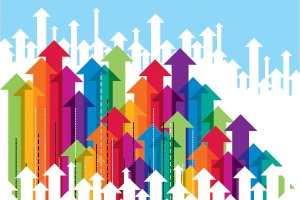 The other day, I got a question about my recent webcast on the economy and markets (something I do quarterly for clients). The questioner pointed out that I sounded pretty optimistic and wondered how that squared with my concerns about next year and my belief that 2017 looks quite a bit like 1999. A fair question. But what’s the answer?
The other day, I got a question about my recent webcast on the economy and markets (something I do quarterly for clients). The questioner pointed out that I sounded pretty optimistic and wondered how that squared with my concerns about next year and my belief that 2017 looks quite a bit like 1999. A fair question. But what’s the answer?
Shorter time frames, better visibility
Briefly, the answer concerns time frames. My quarterly client webcast has a time frame appropriate to its frequency. I reflect on the last quarter and discuss what I think could happen in the next one. In other words, I present a six-month time frame: three months back and three ahead. Every quarter, listeners get a chance to hear what happened, what is likely to happen next, and then rinse and repeat.
My monthly economic and market risk updates have a similar structure, providing the most recent month’s data and thinking about what might happen in the next month. The monthly client videos, which we post here on the blog, also employ a similar one month forward and backward frame of reference.
Why do I present the information the way I do? With shorter time frames, you can have at least some, if not a lot, of visibility. Most of the time, I can make pretty good calls over one to three months. I know that I will be wrong many times. But on the whole? I’ll be right enough to make it worthwhile.
2017 versus 1999, again
The 2017 versus 1999 comparison, in contrast, looks forward over an extended period (18 months or so) and, as such, is inherently less certain. This kind of extended forecast, in fact, is pretty unusual for me. Instead, what I normally focus on is identifying signs of trouble ahead and then reacting to them—rather than predicting when they will show up. That said, enough of today's warning signs come with likely time frames that it was meaningful, as well as a better story, to wrap everything up into a 1999 comparison.
In the end, though, the takeaway for that comparison was not necessarily the date. I point out that, based on the data, it could well be 1997 rather than 1999, or even 1995. Rather, the lesson is how to identify when the high risk level becomes an immediate risk level. While I framed the analysis and discussion around dates and time frames, the conclusion actually ended up back at risk factors and signals.
Risk levels and signals
This is an important thing to remember: we do have some visibility over what will happen in the next one to three months, and it is useful to think about making forecasts over that time frame. Over longer periods, though, the variability and potential for surprises make forecasts increasingly unlikely. It’s much better to keep an eye on the data, develop warning signs, and watch for them rather than watch the calendar.
It might help to put it in personal terms. We know that heart disease risk increases with age. Does this mean that at age 65 you should start worrying more or go to the doctor? The answer is "yes," but it’s not the best answer. Better to watch your blood pressure, weight, and all the other risk factors to know what your risk level is and to keep an eye out for specific things (like chest pains!) that show the risk is becoming immediate. It’s not turning 65. It is the confluence of all the other factors that creates risk, and it is the chest pains that show the risk is now.
Time frames are useful, over the short term. For investors who live in the long term, though, risk levels and risk signals are much more so.


 Print
Print

